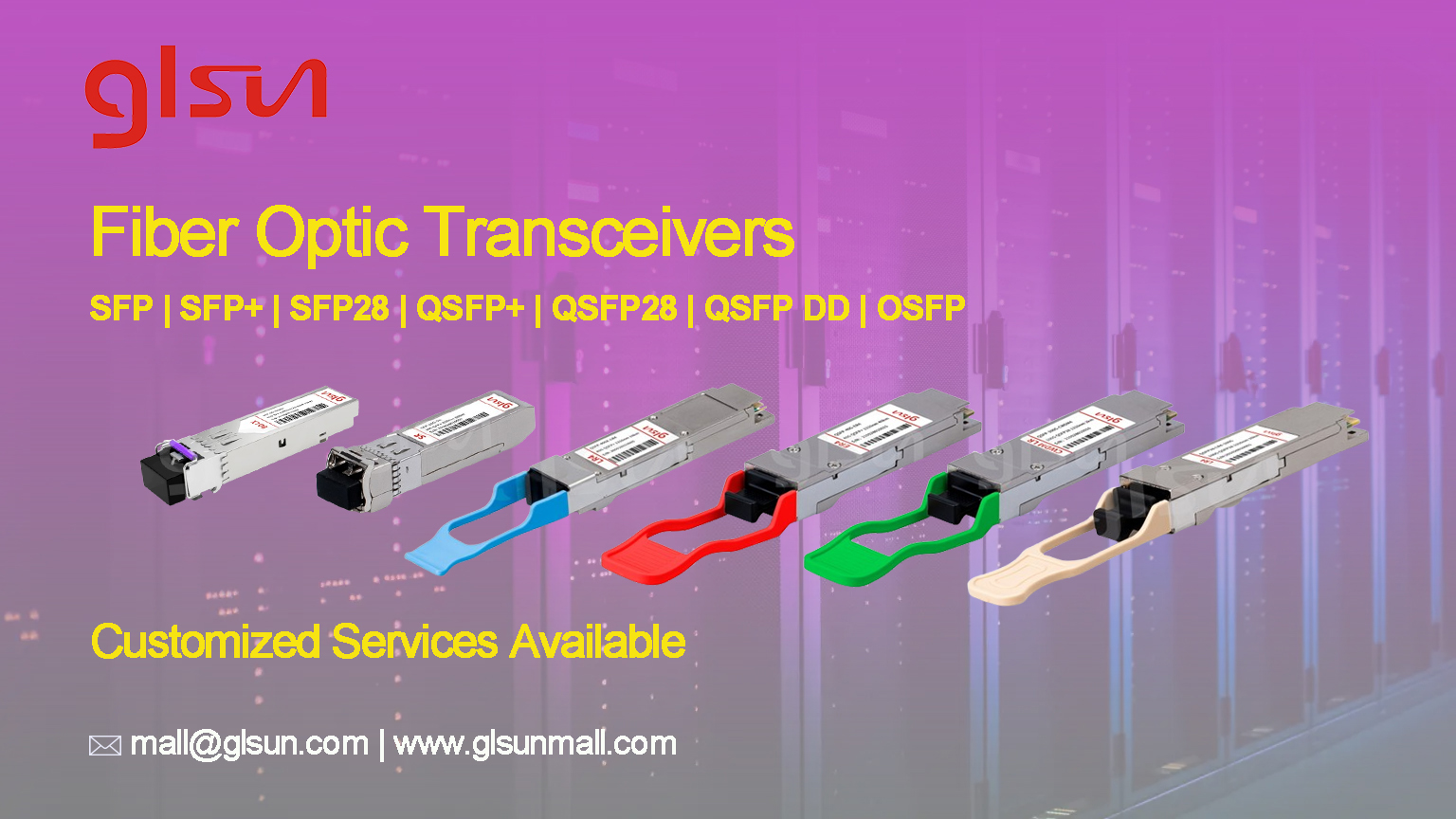Fiber Optic Tech
How Do Single-mode and Multi-mode Optical Transceiver Modules Differ in Their Applications within Data Centers?
Single-mode and multi-mode optical transceiver modules are two different types of optoelectronic devices in the field of fiber optic communication. They are primarily used to convert electrical signals into optical signals and vice versa.
Single-mode Transceiver Module
Single-mode optical transceiver modules use single-mode fiber (SMF) for signal transmission. They utilize a laser diode (Laser Diode) or light-emitting diode (LED) to generate a single, narrow optical wave for communication.
The advantage of single-mode optical transceiver modules is their ability to transmit signals over long distances while maintaining high signal quality. They are commonly used for long-distance communication, such as in metropolitan area networks, long-distance telephone networks, and satellite communications.
The operating wavelengths of single-mode optical transceiver modules are typically in the 1310 nanometer (nm), 1550 nanometer, or longer wavelength windows, which correspond to the regions of lowest loss in optical fiber.
Multi-mode Transceiver Module
Multi-mode optical transceiver modules use multi-mode fiber (MMF) for signal transmission. They utilize a light-emitting diode (LED) to generate multiple modes of optical waves for communication.
Multi-mode optical transceiver modules are suitable for short-distance transmission, such as within data centers, local area networks (LAN), or fiber-to-the-home (FTTH) applications.
The operating wavelengths of multi-mode optical transceiver modules are typically at 850 nanometers (nm), though 1310 nanometers or 1550 nanometers may also be used, especially when wavelength-division multiplexing (WDM) technology is employed.
Transmission Distance: Single-mode optical transceiver modules are suitable for long-distance transmission. Therefore, in data centers, when longer-distance data transmission is required, single-mode optical modules are typically chosen. The transmission distance of single-mode optical modules can reach 150 to 200 km.
On the other hand, multi-mode optical transceiver modules are suitable for short-distance transmission. When short-distance data transmission is needed within data centers or between neighboring buildings, multi-mode optical modules are more appropriate. The transmission distance of multi-mode optical modules is generally below 2 km.
Bandwidth: Single-mode optical transceiver modules support high-speed data transmission, with bandwidths reaching 10Gbps or higher, capable of meeting the demands for high bandwidth and low latency. In contrast, multi-mode optical modules have relatively lower bandwidth, typically 1Gbps or 2Gbps, and are suitable for applications with lower bandwidth requirements.
Connectors and Adapters: Single-mode optical transceiver modules typically use LC connectors, while multi-mode optical modules use SC connectors or MPO connectors. In data centers, the appropriate optical module should be selected based on the specific equipment interface type.
Scalability: As the scale of data centers expands, the demand for scalability in optical modules is also increasing. Single-mode optical modules support long-distance transmission, making them more suitable for scenarios where long-distance data transmission needs to be expanded. Multi-mode optical modules are suitable for short-distance transmission and are ideal for meeting expansion needs within the data center.
Fiber Type: Single-mode optical transceiver modules need to be used with single-mode fiber, while multi-mode optical modules need to be used with multi-mode fiber. In data centers, selecting the appropriate fiber type based on actual needs can better meet data transmission requirements.
Application Scope: Single-mode optical transceiver modules are often used in scenarios requiring relatively higher transmission rates and longer distances, such as metropolitan area network construction. In data centers, when high-speed, long-distance data transmission is needed, single-mode optical modules are a better choice. On the other hand, multi-mode optical modules are mainly used for short-distance transmission, such as in local area networks (LANs). Within data centers, multi-mode optical modules are suitable for scenarios with many nodes, multiple connectors, frequent bends, a high usage of connectors and couplers, and a greater number of light sources per unit fiber length.
Cost: The components used in single-mode optical transceiver modules are twice as expensive as those in multi-mode optical modules, making the overall cost of single-mode optical modules significantly higher than that of multi-mode optical modules. In the process of building a data center, it is crucial to the appropriate type of optical module based on actual needs and budget.




















